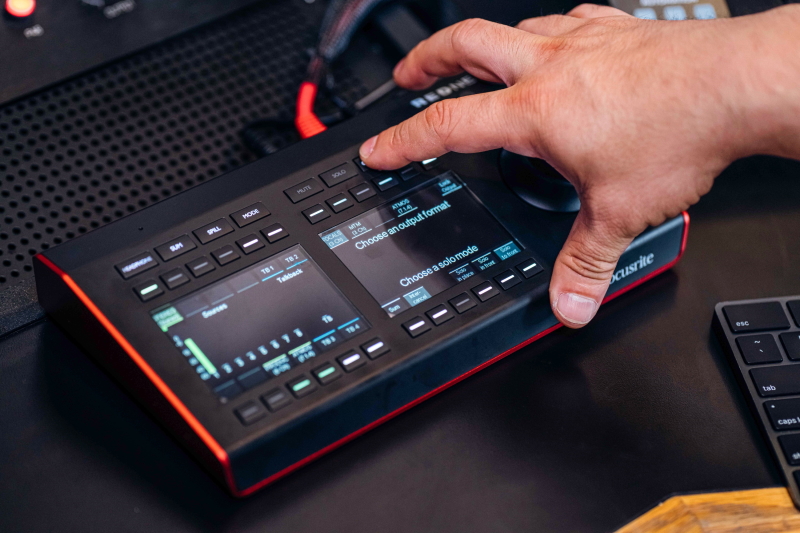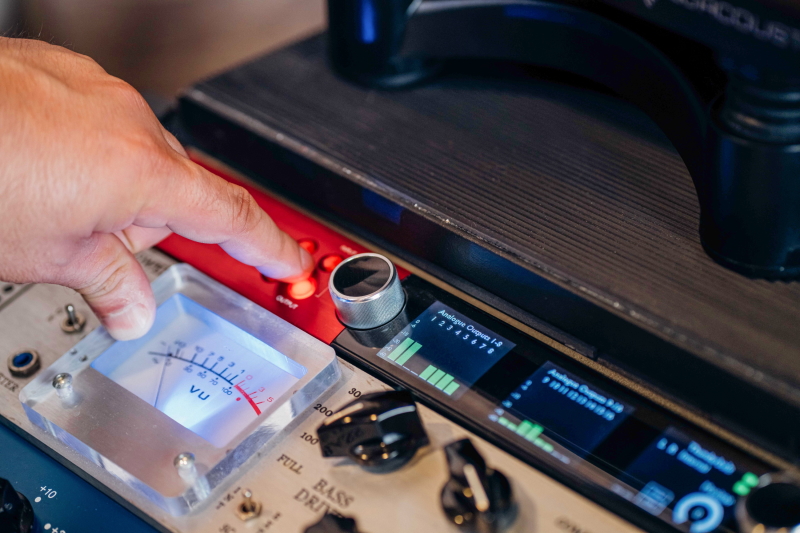Heiga Studios uses Focusrite’s Red 16Line and RedNet R1

Heiga Studios is celebrating its 10th anniversary in its current location in Miami’s downtown, where it has provided audio and/or post-production services for clients including Paramount Pictures, EA Games, 2K Games, Sony Music, Universal, Disney, Toyota and Burger King, as well as recordings for acclaimed artists including Prince Royce, Nicky Jam, Carlos Vives, Pedro Capo, CNCO, MicroTDH, HA*ASH, Kany Garcia, Abraham Mateo and Roberto Carlos. The studio’s beginnings go back to the 1990s, when owners Adrian Morales-Demori and Malury Imbernon met as pro audio students in their native Venezuela, later starting Heiga Studios in a garage there (and becoming husband and wife). They started a relocation process to Florida in 2000 (first Imbernon and then Morales-Demori). The business grew, with a subsequent relocation in 2012 to its current 3,200-square-foot facility in Miami.
Most recently, the facility underwent a complete infrastructure renovation, its signal path, workflow, and monitoring configurations now based on the Dante® protocol along with Red 16Line and RedNet R1 units from Focusrite. The paradigm-shifting implementation of the Focusrite units was overseen by Morales-Demori, who was introduced to the Red series when he was designing the Dante integration at another facility in 2020. “We had decided that we wanted to have Dolby Atmos® mixing capability at Heiga Studios, but the infrastructure needed for that seemed to mean that we’d have to buy a lot more equipment to manage it,” he recalls. “I realized that with the R1, we would be able to, for instance, easily switch between stereo and Atmos mix monitoring at the press of a single button. And the Red 16Line does a lot of things from a single unit, including letting us move between multiple DAWs and also act as a hub for Dante which we are regularly investing in more of in the studio. With both DigiLink and Thunderbolt connections on the Red 16Line, it’s easy to switch from Pro Tools | HD to a second DAW without the need to reconfigure option cards in the interface. We just change the host mode either in the RedNet Control software or on the device front panel and change DAWs. We’ve literally rebuilt the studio around Red systems, and it’s made a huge difference.”

Morales-Demori says the R1’s ability to switch seamlessly between stereo and immersive mixing is an enormous plus, allowing clients to shift mix formats between sessions and also to just as seamlessly toggle monitoring modes during sessions to check image and EQ compatibility between immersive and stereo. “All of this is accomplished at the push of a button, instead of having to re-patch every time,” he says. But just as important are the benefits for business. Imbernon remarks, “Being in charge of Heiga Studios as a CEO, my priority is to provide not only the tools our team needs but also a cost- and time-efficient workflow. Coming from an audio engineer background, I would also never sacrifice quality - I understand the trust artists give us when they are here to capture their art. These Focusrite system components meet all my standards out of the box. Their ability to create and switch between complex studio signal workflows, to switch to something like mixing Dolby Atmos, and to easily connect our analog equipment in our racks with anything in the digital domain like Dante or optical, allow our staff and outside producers/engineers to work easily when recording and mixing music making them the perfect gear to future-proof the continuous evolution of the studio. All of this, and the trust I have in Focusrite, was the key to rewire the entire studio.”
 How to resolve AdBlock issue?
How to resolve AdBlock issue?